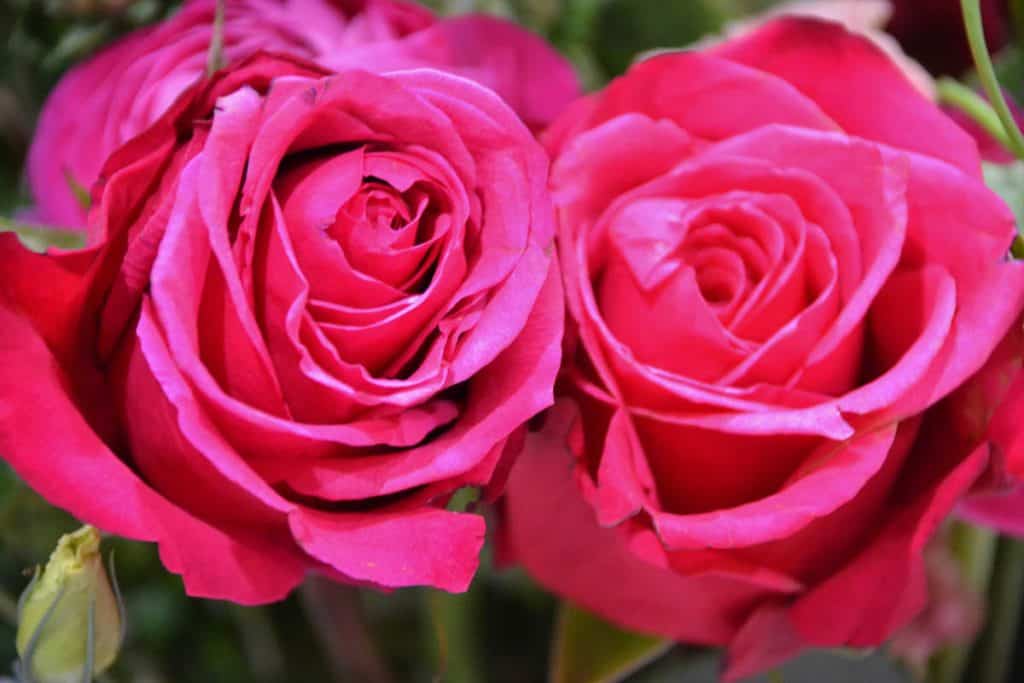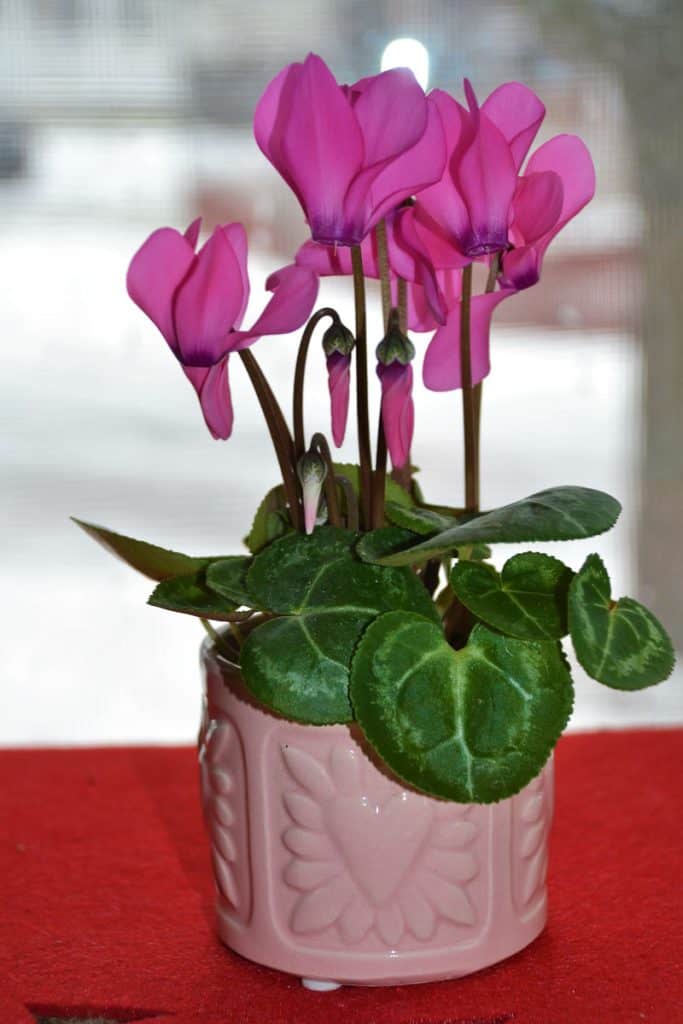Here’s what’s blooming in town this week to make your walks more enjoyable
In a few more months we will be able to dig in the garden again, but for now the only shovel we have been employing is a snow shovel! Almost springlike temperatures later this week have reduced some of the snow piles, and the longer hours of sunlight are becoming very noticeable.
Those following the Winter Olympics this week may have noticed the unusual bouquets given to the medalists. They are created with a traditional Chinese knitting technique and are made with a very thin wool yarn to enable a great deal of realistic detail. The flower makers were mostly grandmothers from across China who typically spend time knitting blankets, hats and mittens for charitable organizations. The choice of flowers and greenery was selected to send a message in “the language of flowers.” Pale pink rugosa rose (Rosa rugosa), red hybrid tea rose (Rosa sp.), lily of the valley (Convallaria majalis), laurel (Laurus nobilis), sweet osmanthus (Osmanthus fragrans) and olive branches (Olea europaea), which represent friendship, perseverance, happiness, unity, victory, abundance and peace, make up the bouquets. Given the difficulty of translation and the use of common names, determining exactly which flowers are intended was somewhat challenging.
Many sources say “Lily” is included, but photos show the small white bell-shaped flowers of lily of the valley. It is easy to see that the meanings are appropriate for the Olympics’ goals of international cooperation and peace, and the dedication of the athletes to their sports. The woolen flowers will certainly be long-lasting, but they lack the intense fragrance that many of the original choices would have given off. Handmade wool flowers also appear in an exhibit in the Olympic Village, with blossoms hanging down like a curtain – these include chrysanthemums, peony, roses and a total of 28 different flower varieties.
A floral language, or floriography, has been observed in many cultures around the world. The same flower will not always mean the same thing everywhere, and even in the same country meanings may differ over time. The medal winners aren’t the only ones trying to read the symbolism in bouquets this week – it is a recurrent theme for Valentine’s Day arrangements as well. Books of flower symbolism were especially popular in the early Victorian era in the United States and Great Britain, but some meanings have stuck over the years while others have become obscure.
Roses are, of course, the most popular Valentine flower since they are usually said to stand for love, although there are nuances depending on the flower variety and color. Red roses often are taken to mean the most ardent love, and in China red is an especially auspicious color used for celebrations and happy occasions. It seems to me that a gift of flowers should be ones that you know the recipient likes, or you could be guided by their favorite color, unless you are prepared to explain obscure meanings to your bouquet choices. I once sent a Valentine’s bouquet of red tulips to my husband at work, and half of his coworkers commented on the “nice roses”! I chose them because I knew he liked red tulips, but it turns out red tulips have the meaning of “endless love.”
We have been hearing a lot about flower shortages in the news this past week and have been warned not to leave our Valentine bouquet orders until the last minute! I have not been seeing much of a shortage so far, but anyone looking for a specific favorite flower has been duly warned.
Flowering houseplants make a good choice for Valentines’ Day, too, either as a gift or decoration. Cyclamen, with its heart-shaped foliage, is a popular choice. The most common houseplant species of cyclamen is Cyclamen persicum. This species is not winter hardy here, but it does well in temperatures slightly cooler than most of us prefer our houses. Night temperatures in the mid-50’s are what they like best, so these might be good choices for a slightly drafty window or a breezeway area that never gets as warm as the main living areas. Flowers are many shades of pink or white with upswept or reflexed petals, making them resemble a bird in flight. Varied meanings in the language of flowers for cyclamen are generally good: sincere love, genuine tenderness, but also shyness and diffidence, according to some.
Editor’s Note: Laura Eisener is a landscape design consultant who helps homeowners with landscape design, plant selection and placement of trees and shrubs, as well as perennials. She is a member of the Saugus Garden Club and offered to write a series of articles about “what’s blooming in town” shortly after the outbreak of the COVID-19 pandemic. She was inspired after seeing so many people taking up walking.





